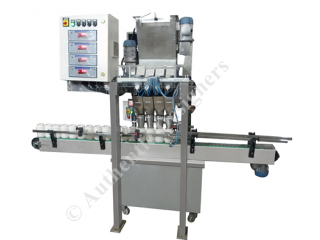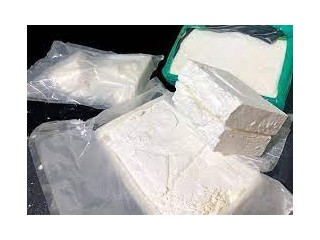What are fishing traps
3 years ago Community Paradise 1.5K views Reference: 26786Location: Paradise
Price: Contact us
WHAT IS TRAPPING?
Fishing is one of the oldest ways by which people have fed themselves and their families. Except for gathering shellfish by hand and spearing fish (Figure 1), primitive trapping is probably the oldest form of fishing.
In early times, flowing water caused by tidal movement and changes in river and lake levels were probably used to trap fish behind rudimentary barriers, often made from sticks and stones. It is likely that early humans found that fish catches could be improved by driving fish into these barriers. They would have found that catches from these barriers decreased over time, as fish became accustomed to them, and would have had to move the traps to fresh areas where more fish could be caught. It would have been hard work to construct new traps, either by moving stones from the old trap or finding new ones. Primitive fishers probably tried making barriers from lighter, more readily available material such as tree branches, brush and vines (Figure 2). This led to the fishers inventing lighter, movable traps made from brush and nets made from vines which they could carry with them when they moved to new areas. They may even have tried bigger, more complicated corral-type fishing traps in lakes, rivers and coastal waters.
Either by accident or by inspiration, fishers then found that:
fish were caught in traps as the tide fell, were forced into them by the current or could be chased into them by the fisher;
fish entered the trap for protection or simply followed other fish seeking shelter;
objects in the traps such as white stones attracted the fish;
bits of fish or meat would attract more fish.
It is from such beginnings that modern traps and pots have developed.
Traps and pots do not seem to have developed in only one part of the world. As fish became an important food source, many types of traps and pots were developed. We will look at some of this variety later in the manual, concentrating on portable traps and fishing net and pots and giving less detail about corrals and other herding devices.
WHAT ARE TRAPS?
Traps are simple, passive fishing gear that allow fish to enter and then make it hard for them to escape. This is often achieved by:
putting chambers in the trap or pot that can be closed once the fish enters;
having a funnel that makes it difficult for the fish to escape (Figure 17, p. 20).
Smaller traps are generally fully covered except for the entrance or entrances, while larger traps that extend above the water level are often left open at the top.
TYPES OF TRAPS AND POTS
People in different parts of the world are not always referring to exactly the same things when they use the words "trap" and "pot". In general, traps are large structures fixed to the shore. Pots are smaller, movable traps, enclosed baskets or boxes that are set from a boat or by hand.
A simple system for the naming of traps and pots was produced by von Brandt in 1959 for FAO and is used in this manual. General types of traps and pots include:
traps that form barriers to fish movement, including walls or dams, fences, fyke nets, gratings and watched chambers that can be closed by the fisher after the fish enters (Figure 2);
traps that make hiding places (habitat traps), including brush traps and octopus pots (Figures 3a and 3c);
tubular traps, which are narrow funnels or hoses that stop the fish from getting out backwards; eel tubes fall into this category (Figure 3b);
traps that are mechanically closed by the fish, including gravity traps or box traps, bent-rod traps (whipping bough traps), torsion traps, drying net and snares;
baskets, which are enclosed traps and pots usually with a structure to make escape difficult; they include pots made of wood, wire or plastic, conical and drum-like traps made of netting with hoops and frames (e.g. drum nets) and box-like traps made with strong frames (Figures 4, 5 and 6);
large open traps, or fishing net accessories or corrals with a part or mechanism to stop fish from escaping, which can be fixed on sticks or anchors, set or floating (Figure 7);
traps set out of the water to catch fish such as flying fish that jump off the tops of waves and glide over the surface when in danger; these can be box-shaped, rafts, boats or nets ("veranda" net types); scoop nets are sometimes used for making fish jump. Pitfall traps can be used for marine animals that migrate over land, such as coconut crabs.
In this manual we will concentrate on how you can make and use the various types of transportable traps and pots, the "basket" type. The making and use of other types will be looked at only very briefly.
HOW DO TRAPS AND POTS WORK?
Trapping is a passive way to catch fish, shellfish, crustaceans (crabs, prawns, etc.) and cephalopods (octopus, squid, etc.) and is different from active fishing methods such as dredging and trawling. Traps can vary, from simple structures such as rock corrals able to hold various fish species passing by, to highly specialized equipment such as lobster pots.
Simple trapping and potting can be carried out from small boats or canoes (Figure 8) or from large vessels. The efficiency of fishing with pots or traps can be improved by the use on board vessels of such equipment as power winches and haulers (Figure 9).
Fish that enter a trap or pot find it difficult to get out and this gives the fisher time to take the fish that are caught.
An advantage of trapping is that it allows some control over the species and sizes of the fish you catch. The trap entrance, or funnel, can be regulated to control the maximum size of fish that enter. The size of the holes, or mesh, in the body of the trap can regulate the minimum size that is retained. To a large extent, the fish species that will be caught depend on the type, model and characteristics of the pot or trap, or cast net being used.




